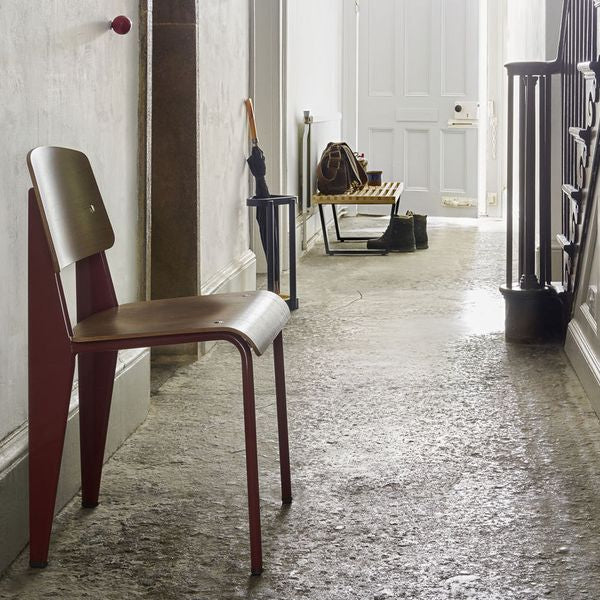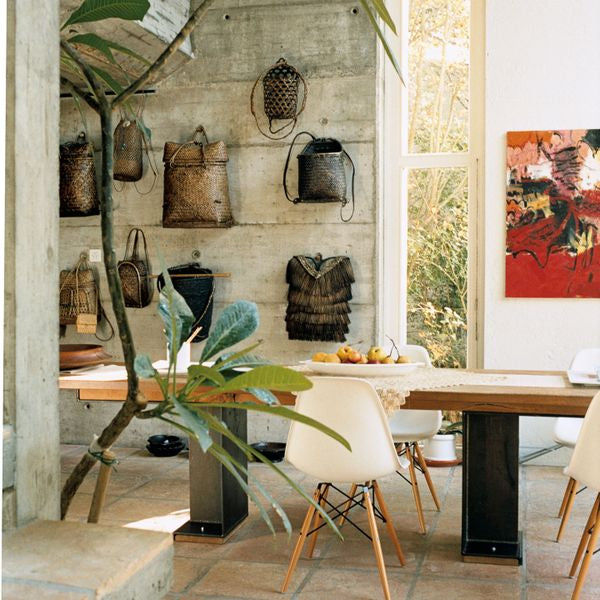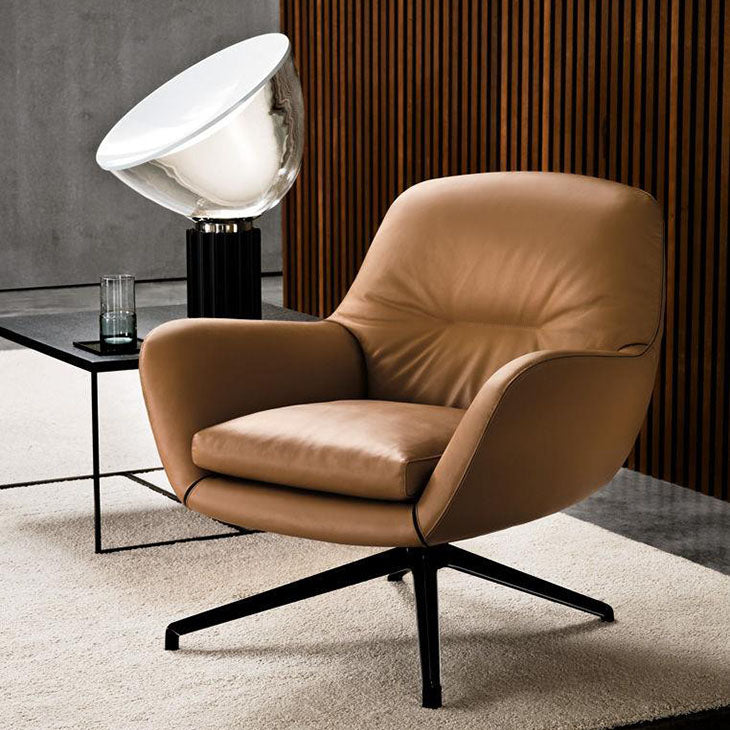Product information
Standard
Jean Prouvé, 1934/1950
The Standard chair by Jean Prouvé has evolved into one of the most famous classics of the French 'constructeur'.
When structure determines design
The French designer, architect and engineer Jean Prouvé created the Standard Chair in 1934. This design exemplifies a fundamental aspect of Prouvé’s numerous furniture designs and architectural works: his unwavering focus on structural requirements.
The load on the back legs of a chair, where it supports the weight of the sitter’s upper body, is greater than on the front legs. This is hardly a surprising discovery, but no other seating design demonstrates this principle as clearly as the Standard Chair: while tubular steel suffices for the front legs, which bear a relatively light load, the back legs are made of voluminous hollow sections that transfer the primary stress to the floor. The profile of the back legs, formed from thin bent sheet steel, resembles an aircraft wing, with the widest measurement at the point where the leg meets the seat frame – that is, where the stress is greatest. The tapered shape of the hollow section from the seat surface upwards simultaneously defines the angle and position of the backrest.
The load on the back legs of a chair, where it supports the weight of the sitter’s upper body, is greater than on the front legs. This is hardly a surprising discovery, but no other seating design demonstrates this principle as clearly as the Standard Chair: while tubular steel suffices for the front legs, which bear a relatively light load, the back legs are made of voluminous hollow sections that transfer the primary stress to the floor. The profile of the back legs, formed from thin bent sheet steel, resembles an aircraft wing, with the widest measurement at the point where the leg meets the seat frame – that is, where the stress is greatest. The tapered shape of the hollow section from the seat surface upwards simultaneously defines the angle and position of the backrest.


The 1934 model was introduced as Chair No. 4, since it had been preceded by three prototypes; further versions continued to be developed under the name ‘Standard’. Up until the early 2000s, the work of Jean Prouvé was known outside of France to just a small circle of architects and collectors. Although re-editions of his furniture existed, his designs did not find the attention and distribution they deserve.
Why does a company like Vitra, who is committed to contemporary design, also produce furniture that was conceived long ago? The answer: because some designs from the past remain unsurpassed and have lost none of their vitality or relevance. Notable examples include the work of Charles and Ray Eames, Alvar Aalto, Ludwig Mies van der Rohe, Marcel Breuer – and likewise Jean Prouvé.
Why does a company like Vitra, who is committed to contemporary design, also produce furniture that was conceived long ago? The answer: because some designs from the past remain unsurpassed and have lost none of their vitality or relevance. Notable examples include the work of Charles and Ray Eames, Alvar Aalto, Ludwig Mies van der Rohe, Marcel Breuer – and likewise Jean Prouvé.


Metal & Wood
The Standard was manufactured in Jean Prouvé’s own factory. Most models had a metal frame and legs, with a seat and backrest made of wood. Other variations were made completely of metal or – especially during wartime and the related metal shortages – entirely of wood. Some had cushions in various materials, or demountable components for ease of transport; the last models with back legs made of aluminium followed in the 1950s.


Metal & Plastic
Standard SP (Siège en Plastique) builds a bridge from past to present, giving this iconic chair a contemporary look without altering its form: made of robust plastic, the seat surface and backrest of Standard SP come in a palette of finely modulated colours.







Recommended for You
- Choosing a selection results in a full page refresh.
!









